Mila was diagnosed with NF1 when she was about two-months-old. She was born with a heart murmur, which was unrelated to her NF. But a one-year follow-up of her murmur led to the discovery of Mid-Aortic Syndrome and Renovascular Stenosis, very rare manifestations of Neurofibromatosis that caused Mila to have extremely high blood pressure. Shortly after emergency surgery at 17-months-old, Mila passed away.
Kate Kelts, CTF’s Patient Support Coordinator and a registered nurse, spoke with her parents, Jessica and Dan, to learn more about Mila’s life and how Jessica and Dan are fighting to make sure doctors have a better understanding of the critical nature of taking an infant’s blood pressure.
This conversation has been edited for publication.
Kate: Thank you both for taking time this morning to talk with me about Mila. Why don’t we start by hearing about who Mila was and about your family.
Jessica: I had a very healthy pregnancy and Mila was born on September 16, 2017. She was perfect. She was such a joy and the sweetest girl. She loved to love and be loved.
Mila was super smart, she already had tons of words by the time she was 17-months-old. She could point out the smoke detector and the sprinkler in every single room. She knew every single body part of hers. It was really a gift for her short life. She just knew more than she should, I think. She loved Bruce Springsteen, one of her first words was Bruce (we can thank my mom for that!). Mila would always point to our cell phones and we knew that meant to put on some Bruce Springsteen. She would dance and smile and say “Bru!” She just loved it.
Kate: Tell us a little bit about how you first discovered Mila’s diagnosis of NF1.
Dan: Mila was born with a heart murmur. When she was two days old, she had an echo. They told us it was very common in newborns, but they wanted us to go to CHOP Cardiology.
CHOP did another echo and an EKG, which was one of the scariest moments of our lives. They told us she had a small VSD, but they expected it to close within a year. They told us she’s totally healthy but come back in one year and we’ll check on it again. And that was that.
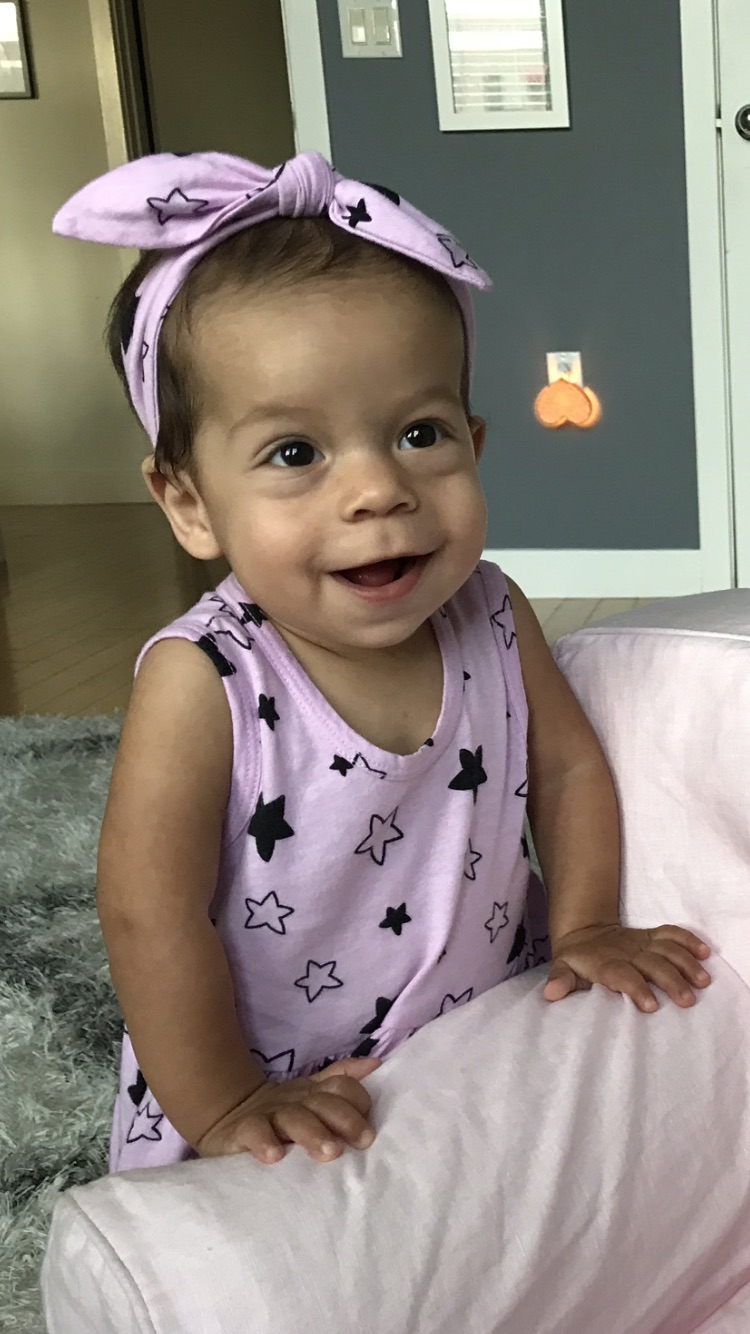 Jessica: Then at around three or four weeks old, we started to notice these birthmarks on Mila. Café-au-lait spots, which at the time, we had no idea what they were. They were showing up on her back and she had about five of them. I just thought they were really cute birthmarks. Neither my husband nor I thought anything of it. We asked about them at her one-month appointment and the pediatrician basically said to us that they were for her to worry about, not us.
Jessica: Then at around three or four weeks old, we started to notice these birthmarks on Mila. Café-au-lait spots, which at the time, we had no idea what they were. They were showing up on her back and she had about five of them. I just thought they were really cute birthmarks. Neither my husband nor I thought anything of it. We asked about them at her one-month appointment and the pediatrician basically said to us that they were for her to worry about, not us.
Of course, this was immediately a red flag for me and Dan. We went home and Dan Googled everything related to birthmarks and kids. One of the things we saw was neurofibromatosis and we started to panic. We had never heard of it before.
Dan: Our initial thought about this was, “This can’t be. Jess and I don’t have it, so she doesn’t have it.” We didn’t know at that time that there’s spontaneous genetic diseases. We thought that someone had to be a carrier for it.
Jessica: I contacted my cousin who had some connections at CHOP and she got us right in to CHOP Dermatology. The dermatologist looked at her and was very concerned. She scheduled an appointment with the genetics department. The geneticist examined all three of us and within 15 minutes, she brought us back into the room and handed us a packet that said Neurofibromatosis Type 1. We were hysterically crying and very confused.
She explained to us that in 50% of the cases of NF1, it’s just spontaneous, and that’s exactly what happened with Mila. I had a tough time accepting it and I insisted on a blood test. The results came back and confirmed the diagnosis. We got her right into the NF Department at CHOP Clinic.
Dan: The doctors explained to us that she would need surveillance every six months of her life to check for tumors and to make sure she was doing ok. So when she was nine-months-old, she had her first sedated MRI and an eye exam.
Mila had to get her blood pressure taken at almost every appointment. It’s obviously very hard to take an infant’s blood pressure under any circumstances. Whenever healthcare professionals tried to take her blood pressure, they either gave up because she would cry since the cuff squeezed so hard, or they just attributed a high BP to a false positive because of her crying. To this day, we don’t know what Mila’s blood pressure was at that time.
Jessica: During her first sedated MRI, they found a tiny, benign tumor on her leg, but everything else was totally fine. She was still a healthy, normal baby girl meeting all of her milestones. We knew Mila had NF, and we were just ready to be the overly protective parents that we needed to be. We were getting her the best care and monitoring the situation and just trying to do everything we needed to do to make sure she would be okay forever.
In the meantime, everything else was great. Mila had a very normal life. Her first year of life was filled with music, the beach, dancing, fun outfits, learning words and just being with her family. That took us to her first birthday in September 2018 and a check-up on the heart murmur. We went back to CHOP Cardiology. They did an Echo and an EKG. Then the doctor came into the room and told us he believed the heart murmur went away but he saw something else and he didn’t know what it was. He basically said to us he thought there was a mass that was pressing on her aorta down by her diaphragm.
Dan: He said her heart was very big and he didn’t know what was causing it and he needed more information. This was a Friday and they said they wanted to schedule an MRI that Monday to get more imaging. It was the vaguest conversation and we were terrified.
Mila had a sedated MRI that Monday and halfway through, the doctors came out and said there’s no mass, but her blood pressure is dangerously high and we need to admit her right now.
Jessica: Her blood pressure was 240/110 while she was sedated. We were admitted right away and the immediate goal was to bring down her blood pressure. They did not know what was causing it. They immediately started her on BP meds that I guess that they would start any kid on and they weren’t working.
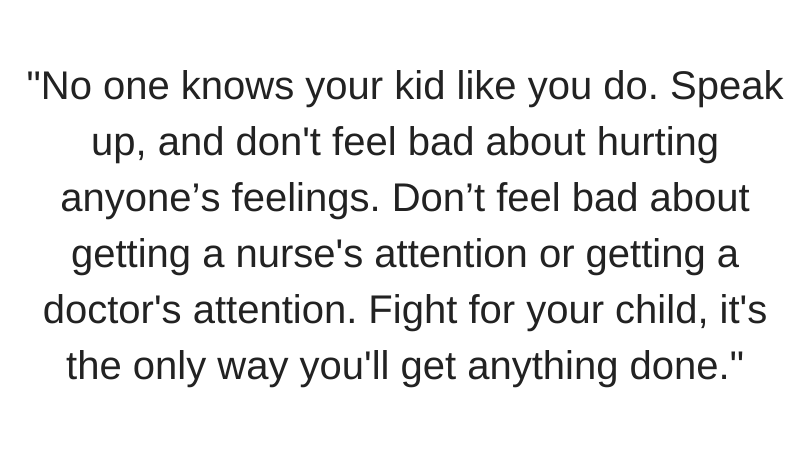 We knew she has this underlying condition of NF1, but, for the most part, before this point, we thought that we had a perfectly healthy baby and all of a sudden, we’re in the ICU. She was completely swollen, sedated and we were being told by doctors that they had no idea what they were seeing. It was just the most terrifying experience that anyone could ever imagine.
We knew she has this underlying condition of NF1, but, for the most part, before this point, we thought that we had a perfectly healthy baby and all of a sudden, we’re in the ICU. She was completely swollen, sedated and we were being told by doctors that they had no idea what they were seeing. It was just the most terrifying experience that anyone could ever imagine.
The PICU doctors started to include the vascular team at HUP, which is not a children’s hospital, obviously, it’s the Hospital of the University of Pennsylvania. We had adult doctors and surgeons coming in just studying her case.
They finally got all this imaging and they saw her aorta by her diaphragm was extremely, extremely thin and they diagnosed her with Mid-Aortic Syndrome and Renovascular Hypertension. Basically, her aorta was extremely narrowed by her belly button and her kidney arteries were extremely narrowed. All of this was causing her high blood pressure and her heart to enlarge. They told us to think of it this way: your heart is a muscle and the more you work out a muscle, the bigger it gets. Well Mila’s heart is pumping so hard because of her high blood pressure, that it’s so big and we need to bring down that blood pressure.
Dan: As we learned more about her condition, we found out that when they did an MRI at nine-months, they took her blood pressure on her leg. But her blood pressure on her leg was normal because of where her stenosis was. So, in other words, for the first year of her life, her high blood pressure was never detected. We’ve learned her high blood pressure (and high blood pressure in general) can only be detected if taken on the right upper arm. If taken anywhere else, you’re not going to get the right reading. Even when we were admitted in the hospital, we still had nurses and doctors trying to take blood pressure on her legs. We kept having to tell them that wasn’t the correct way to do it.
Jessica: It was obviously extremely confusing because usually you’re at a hospital and you rely on the doctors to tell you what to do. In Mila’s case, they could not fix her condition because they did not have a team of pediatric vascular surgeons. CHOP partnered with the experienced team at the University of Michigan.
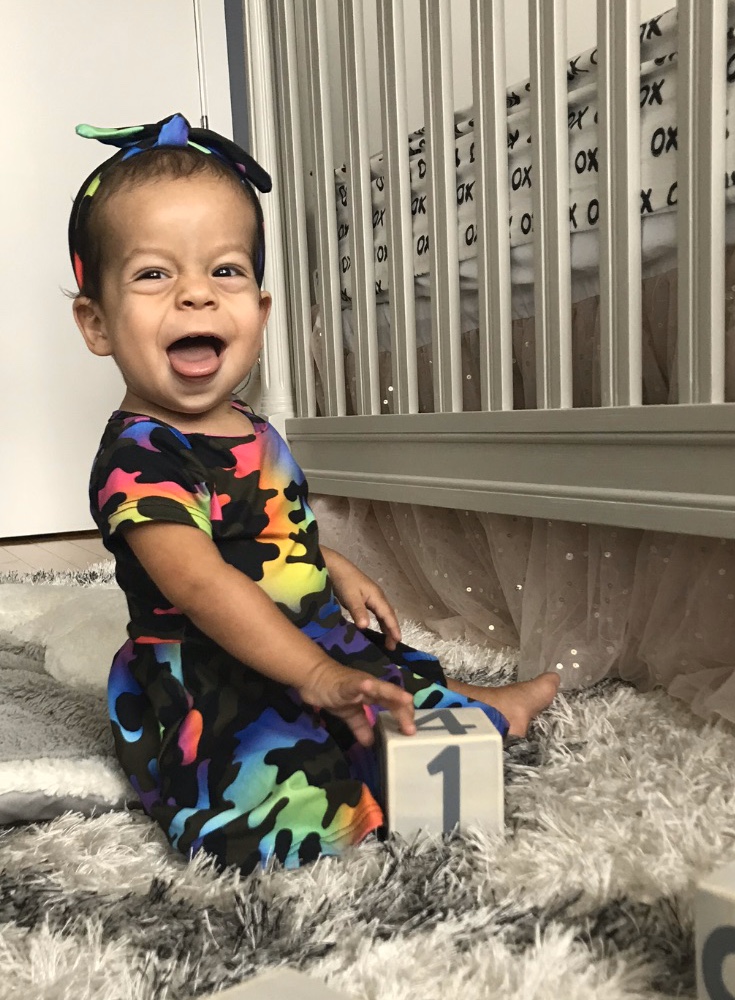 We did numerous conference calls with the Michigan team and their suggestion, and CHOP agreed, was to medically manage the high blood pressure until she was about three to four-years-old and then perform a surgery that would basically be a bypass of her aorta and revascularization of her kidney arteries. They wanted to delay the surgery if possible until she was older and stronger.
We did numerous conference calls with the Michigan team and their suggestion, and CHOP agreed, was to medically manage the high blood pressure until she was about three to four-years-old and then perform a surgery that would basically be a bypass of her aorta and revascularization of her kidney arteries. They wanted to delay the surgery if possible until she was older and stronger.
In the meantime, we had to bring down Mila’s blood pressure. So the next few weeks while we were admitted at CHOP were basically a trial and error period where they had to test all these different medications. She ended up on five drugs that she had to take multiple times per day. When we finally went home just before Christmas, our life became very, very different. We went home with a blood pressure machine and we were taking her blood pressure four times a day at least. We were also crushing pills, filling syringes and giving Mila all of her meds. We were also taking her to CHOP weekly for appointments.
We just tried to keep life as normal for Mila as possible. She did not have any restrictions so we still took her to music classes. Everything was pretty normal until early February 2019, she got a cold and her blood pressure spiked to over 200. We went in for the echo and they called us and they said, “Medical management is failing, she’s in the early stages of heart failure. We need to do surgery sooner than expected.”
We were in touch with the doctors in Michigan and they told us it was time to come out there. Her surgery was scheduled for February 28, 2019. We didn’t want to fly because of her blood pressure. We drove nine hours to Michigan, we stopped in Pittsburgh so that we could break up the trip. Mila was the happiest girl, loving her road trip, loving staying in the hotel, sleeping with mommy and daddy in the bed. She just was so happy. We got to Michigan and we were terrified and she had all this testing done when we were there. The night before her surgery she had vanilla ice cream and mac and cheese, she was living it up. Then, that night she slept on me the whole night. We never left her side ever.
Jessica: They did this eight-and-a-half-hour surgery which was an aortic bypass and the revascularization of her kidney arteries. A lot of people understandably get confused about this surgery so I just want to stress again: the aorta runs all the way down by the diaphragm. Her stenosis was not up by her heart, it was down by her belly button.
After the surgery, we were told it was a huge success. We were so joyous, we were celebrating, our whole family was there. We went up to the ICU. She was on a ventilator, which we knew would happen. But we were beyond relieved because at this point, everything was okay. The surgery was successful. We went to sleep next to her. Then, at around five o’clock in the morning, the doctors woke us up and told us something was off and they were calling her surgeons to come check her out.
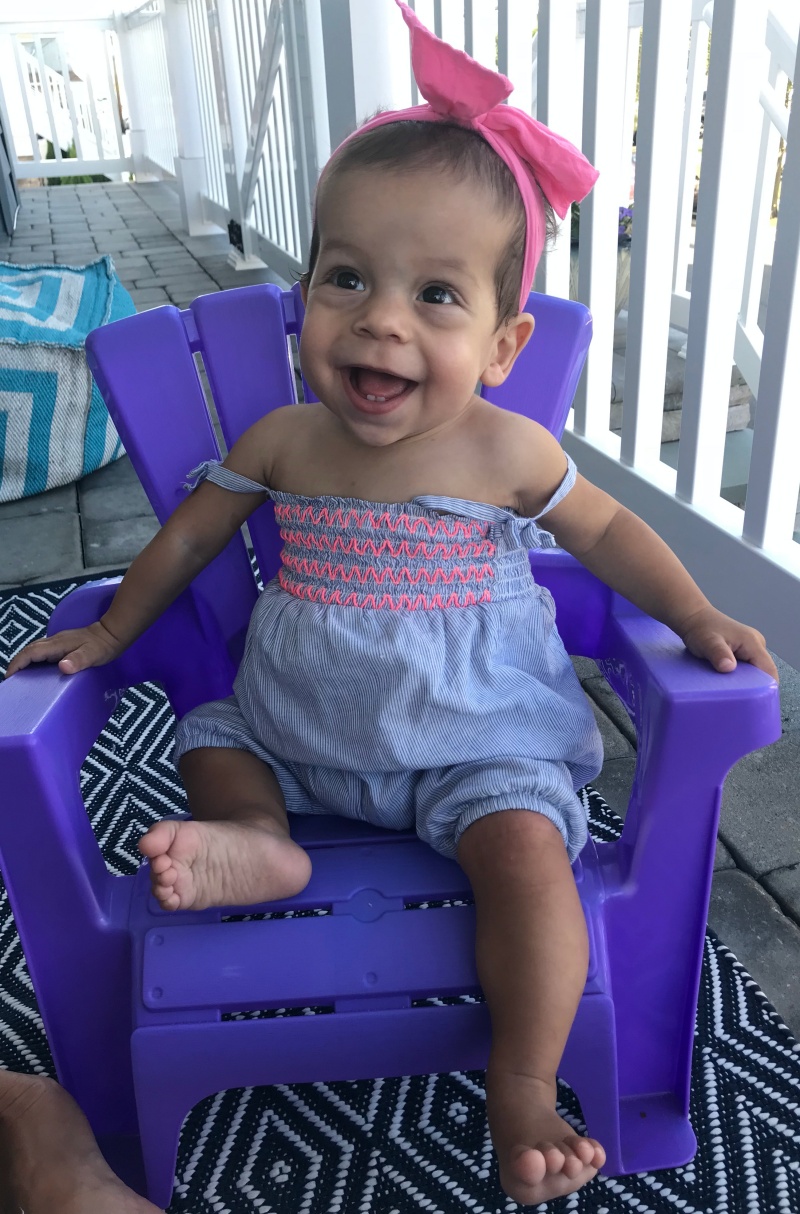 Mila’s surgeon told us her belly was hard and they needed to bring her back down to the operating room to check her out. There are no words to describe the fear we felt. We went back to the waiting room. I cannot get into the details of the rest of the experience. It is too hard for me. But Mila went into cardiac arrest during the procedure. She was put on life support. She fought for one more day. On Saturday, March 2, she passed away in my arms.
Mila’s surgeon told us her belly was hard and they needed to bring her back down to the operating room to check her out. There are no words to describe the fear we felt. We went back to the waiting room. I cannot get into the details of the rest of the experience. It is too hard for me. But Mila went into cardiac arrest during the procedure. She was put on life support. She fought for one more day. On Saturday, March 2, she passed away in my arms.
Up until she was 14-months-old, we thought we had this healthy, healthy baby with an underlying condition that we thought we were going to protect her from for her whole life. Then, we got this horrible news. Nobody knew what it was and it was almost like she never had a chance. Meanwhile, she probably had high blood pressure her whole life and it was never detected because it was never properly taken. But I think about this and I think, if her blood pressure was detected earlier, her life would have been so different. We probably would have been in the hospital for her whole life.
The doctors told us that the next case they see like Mila’s will be in 10 years. We’re here now to do two things. One, make sure that the parents of that next child in 10 years has the information they need from the start. And two, to make sure that every child with NF should get their blood pressure taken… especially if they’re under three-years-old.
After Mila passed away, we went from being this happy family to the deepest level of grief imaginable. We will never be the same. I am still having a very tough time accepting our reality and I just want to make sure that we are still honoring her every day forever. I still need to be fighting for her. I need to keep her alive.
Dan: We met with the doctors to brainstorm what we could do and how our foundation could benefit more than just these very rare cases like Mila.
We came up with The Magical Mila Foundation. The first goal of the foundation is trialing new blood pressure technologies, including Dopplers. Basically, right now when you take a blood pressure you use a cuff, even in young children and the cuffs squeeze pretty hard and the kids cry… so you get these false high results. It’s a terrible experience not only for the child, but for the parent who’s watching their kids scream and then you’re getting a wrong number. The Magical Mila Foundation is funding a pilot program at CHOP where they are trialing new technology that is a much more comfortable way to take a child’s (kids under 3) blood pressure.
The second goal is to set up alerts within the CHOP medical system. It would basically alert staff of high-risk patients and letting them know when to take their blood pressure. That would be huge because obviously Mila was a high-risk patient and they never got her correct blood pressure in the first year of her life.
Jessica: The third goal is to educate CHOP staff on how to take blood pressure and to take it on the right upper arm (not the leg).
We’re hoping to one day expand The Magical Mila Foundation beyond CHOP. Mila passed away in March 2019 and I would say within a month we were having conversations to channel our grief and honor her life.
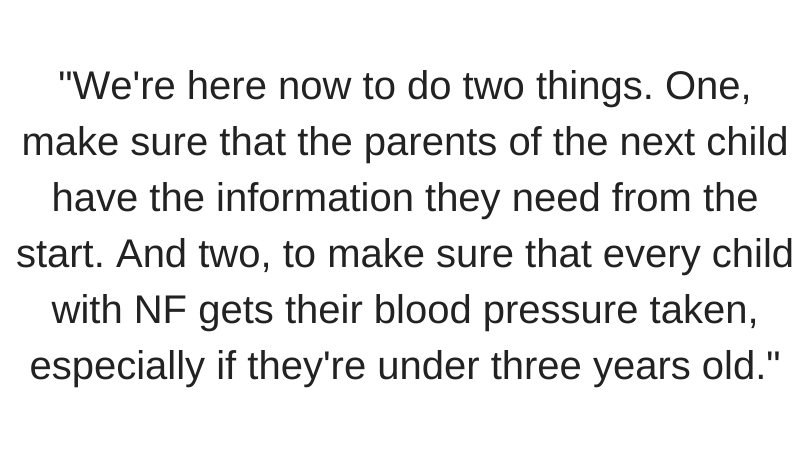 Kate: I’m glad that you connected with us and we’re really excited to be able to share your story. I think it really shows the power of community and of the passion that parents bring. You want a great medical team that you trust and can work with but no one is ever going to care about your kid or know your kid better than you are as a parent.
Kate: I’m glad that you connected with us and we’re really excited to be able to share your story. I think it really shows the power of community and of the passion that parents bring. You want a great medical team that you trust and can work with but no one is ever going to care about your kid or know your kid better than you are as a parent.
Jessica: Yeah. That’s something that was very important to keep in mind, especially when we were in the hospital. No one knows your kid like you do. That is something I would tell any parent who’s scared and feels alone and unsure of anything in the hospital. You feel completely helpless when your child is sick. It consumes you. So speak up, fight for your kid and don’t feel bad about hurting anyone’s feelings. I kicked that thought pretty quickly when we were in the hospital. Don’t feel bad about getting a nurse’s attention or getting a doctor’s attention. Fight for your child, it’s the only way you’ll get anything done.
Dan: Be active. We were part of every morning rounds that they would do, any meeting the doctors were having. Honestly, we felt like we knew what was going on better than them at some points.
Kate: Yeah, absolutely. Everything that you are doing to honor Mila’s memory will undoubtedly help another family. Like you said, here’s a child with a rare condition and then on top of that a rare, rare manifestation of a rare condition, it can be very isolating. The fact that you’ve taken that pain of your journey and channeled it to reach other families… to be able to act, it’s really important. Information and education is power and parents need to have it. It’s vital. I so appreciate you guys taking the time to talk to me today.
Jessica: Thank you.
To learn more about the Magical Mila Foundation, please visit https://magicalmilafoundation.org/.

